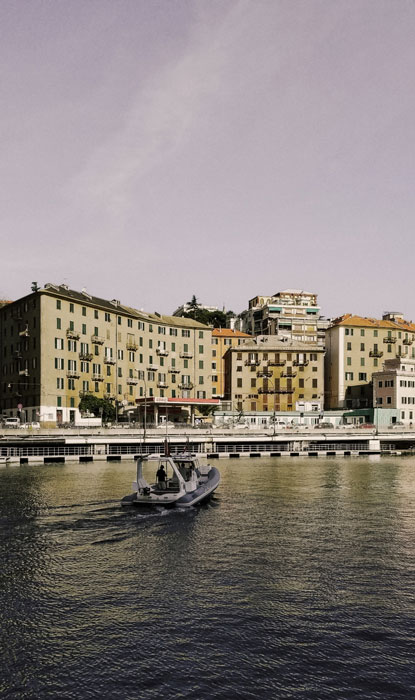
Traveling to Europe is exciting and enjoyable. However, organizing the specifics can make it seem like an enormous burden. Where should you go next? What will the budget be? How many destinations can you go to?
We're going to give you our best advice on how to plan a trip to Europe so you may have the most pleasing experience possible.
Planning a trip to Europe
Planning a trip to Europe is a difficult task. Along with deciding where to go and what to see, tourists must also think about how to get there, where to stay, how to get around, and what to eat. Along with overcoming language challenges, managing foreign currencies, and avoiding scams, traveling through Europe demands preparation.
Travelers who are attempting to determine the best method for organizing a vacation to Europe may quickly become bogged down in the process.
There are no right or wrong ways to organize a trip to Europe, which is wonderful news. The ideal approach to travel Europe is in a method that suits your style, budget, and travel objectives.
Planning a Vacation to Europe: Where to Go
Choosing where to travel is the first step in the Euro trip planner, and it's not an easy one. Travel plans to Europe can encompass several cities and numerous countries due to the continent's relative compactness. Having said that, attempting to see everything would be impossible (and exhausting).
Choosing which locations to include on your schedule for Europe can be challenging because the continent is studded with historic European cities, breathtaking coastal getaways, and unbelievably tiny towns.
In actuality, deciding where to travel is frequently the most difficult part of organizing a European trip. Your planning of European vacation places will be inspired by and guided by our advice.

Euro trip planner to one destination
For many tourists, visiting one city—and one city only—is the finest way to experience Europe. It is perhaps the simplest way to plan a trip abroad. Less planning is necessary when you stay in one place for the duration of your trip, which might reduce stress.
Additionally, spending the entirety of your stay in one destination enables you to explore it more thoroughly (or unwind more profoundly, if that's what your European holiday is all about!). Travelers can find hidden jewels, get an authentic flavor of the culture, and take day trips to local attractions rather than rushing through Europe's biggest cities and merely seeing the highlights.
Euro trip planner to multi cities or multi countries
Most people who travel abroad choose to arrange a multi-city tour through Europe. Travelers naturally prefer to squeeze as much as possible into a single vacation because international flights are pricy and lengthy.
Understanding how to travel around Europe to various countries is now simpler than ever, thanks to a single common currency among numerous nations and border-free crossings within the Schengen Area.
You can either arrange a vacation throughout Europe to cities in different nations or plan a trip to Europe to see many cities in one country, such as a one-week trip to Spain (for example, take a Two Week Trip to London, Paris, and Rome).
The advantages of staying within one country are that you will typically only be tested in one foreign language and the shorter distance between the cities. Additionally, living within one country might provide a more immersive experience just as staying in a single European city.
Once more, the best way to organize a trip to Europe depends on your style, budget, and level of comfort.
Plan a Budget for Your European Vacation
The next step in planning a trip to Europe must be this. It's simple to start planning if you are aware of your financial situation.
Some European cities are notoriously expensive, whereas other places are considered "affordable" to visit. While we think it is feasible to travel everywhere on a budget, tourists searching for a cheap European holiday will need to consider their budget when deciding which places to go.
Budget visitors may find it prohibitively expensive to book a vacation to London, Edinburgh, or Dublin. It's frequently less expensive to book a trip to Portugal's Porto and Lisbon or Eastern European nations like Poland or Hungary.
A budget should always be written down on paper. You can use a trip budget tool, such as Trip Expense Manager, TravelSpend, or Trail Wallet, to keep track of your spending.
Calculate travel time
The time it takes to travel between destinations on a multi-city vacation in Europe must be factored into your overall travel schedule. Even though Europe is a small continent, getting from one place to another can still take a long time. Your vacation shouldn't consist entirely of travel time. Consequently, it is advisable to select locations that are close together.
Additionally, before deciding on particular cities, look into other ways to move from one location to the next. Can you go by plane, train, or bus? When will it be finished? What will the price be?
How many days in How many cities?
The key step in planning your vacation to Europe is deciding how many destinations to visit and how long to stay in each.
Plan a two-week trip to Europe
Many tourists, especially those arriving from the US, plan a typical two-week trip to Europe. In two weeks in Europe, you may stay in four different locations. Ambitious tourists may stay in five different places, but only if the cities are close by, well connected, and easy to get around.
On the other side, staying in just three places might be a better way to take things slowly and fully appreciate each place.
Document check
You should arrange the documents next now that all the arrangements have been made. Here is a list of documents for your convenience:
- An authentic passport
- Visa Documents
- International Driving Permit
- Bookings for flights and lodging documents
- Tours Scheduled Documents
- Documents for car rentals, train, bus, and ferry tickets
Conclusion
It is simple to get lost in the maze of information overload available on the Internet when it comes to a continent as diverse as Europe.
Everything can be complicated, especially if you need to apply for a Visa first. This includes narrowing down your destinations and creating a list of necessary expenses.
This practical guide on preparing for a trip to Europe to help you avoid headaches and show you that planning a trip can be just as enjoyable as taking it.



